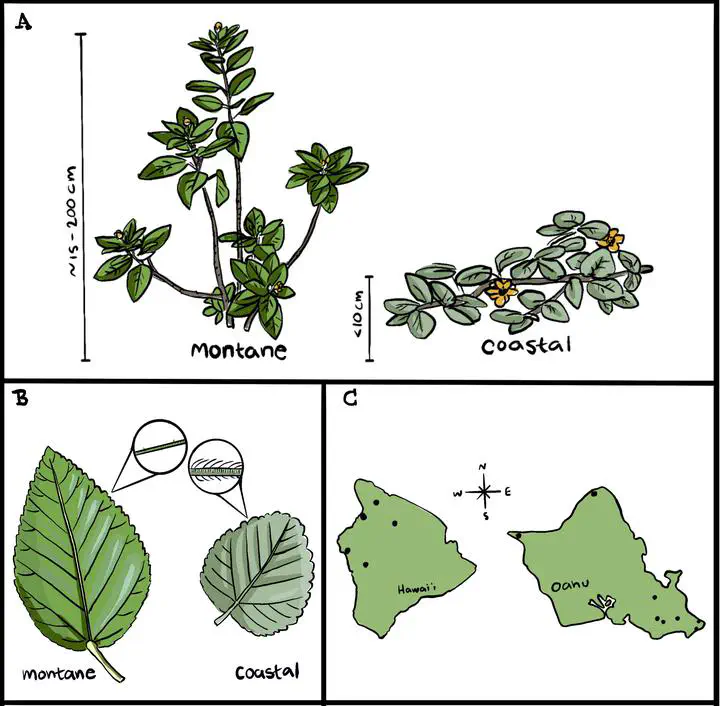Amphistomy increases leaf photosynthesis more in coastal than montane plants of Hawaiian ʻilima (Sida fallax)
 Image credit: Genevieve Triplett
Image credit: Genevieve TriplettAbstract
Abstract Premise The adaptive significance of amphistomy (stomata on both upper and lower leaf surfaces) is unresolved. A widespread association between amphistomy and open, sunny habitats suggests the adaptive benefit of amphistomy may be greatest in these contexts, but this hypothesis has not been tested experimentally. Understanding amphistomy informs its potential as a target for crop improvement and paleoenvironment reconstruction.
Methods We developed a method to quantify “amphistomy advantage” () as the log‐ratio of photosynthesis in an amphistomatous leaf to that of the same leaf but with gas exchange blocked through the upper surface (pseudohypostomy). Humidity modulated stomatal conductance and thus enabled comparing photosynthesis at the same total stomatal conductance. We estimated and leaf traits in six coastal (open, sunny) and six montane (closed, shaded) populations of the indigenous Hawaiian species ʻilima ( Sida fallax ).
Results Coastal ʻilima leaves benefit 4.04 times more from amphistomy than montane leaves. Evidence was equivocal with respect to two hypotheses: (1) that coastal leaves benefit more because they are thicker and have lower CO 2 conductance through the internal airspace and (2) that they benefit more because they have similar conductance on each surface, as opposed to most conductance being through the lower surface.
Conclusions This is the first direct experimental evidence that amphistomy increases photosynthesis, consistent with the hypothesis that parallel pathways through upper and lower mesophyll increase CO 2 supply to chloroplasts. The prevalence of amphistomatous leaves in open, sunny habitats can partially be explained by the increased benefit of amphistomy in “sun” leaves, but the mechanistic basis remains uncertain.